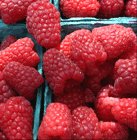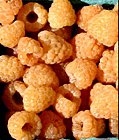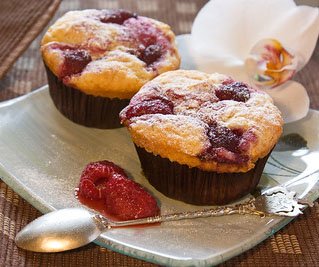Raspberry Nutrition facts
Wonderfully delicious, bright red raspberry is among the most popular berries to relish! They are rich sources of health-promoting plant-derived chemicals, minerals, and vitamins that are essential for optimum health.
Botanically, raspberry is a small shrub belonging to the family of Rosaceae, of the genus; Rubus. It is native to Europe but today widely cultivated in many temperate regions all over the world under supervised farms. Poland, the United States, Germany, and Chile are some of the prominent growing areas of raspberries.
Botanical name: Rubus idaeus.
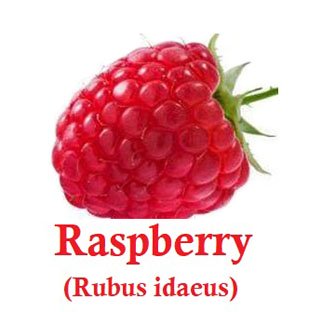 |
Several different sub-species of raspberries exist. However, the most popular commercial cultivar in practice is red-raspberry, which is the result of hybridization between R. idaeus (European raspberry) and R. strigosus (American raspberry) types.
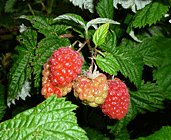 |
| Rubus idaeus plant. Photo courtesy: mat_the_w (flikr.com) |
Technically, the whole berry is an aggregate of small "drupe" fruits arranged in a circular fashion around a central, hollow space. Each little drupelet is composed of a juicy pulp unit with a single, tiny, white-yellow seed.
Raspberries taste varies by cultivar that ranges from sweet to acidic; a feature that is quite similar to strawberries.
Raspberry has a conical shape, weighs about 2-4 g, and contains 80-100 drupelets arranged in concentric whorls. While the most common R. idaeus cultivar is red-pink, several hybrids do come in a range of colors including black, purple, orange, yellow, and white (colorless).
